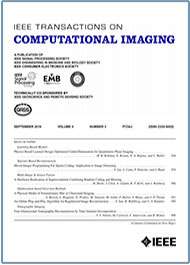- Our Story
- Publications & Resources
- Publications & Resources
- Publications
- IEEE Signal Processing Magazine
- IEEE Journal of Selected Topics in Signal Processing
- IEEE Signal Processing Letters
- IEEE Transactions on Computational Imaging
- IEEE Transactions on Image Processing
- IEEE Transactions on Information Forensics and Security
- IEEE Transactions on Multimedia
- IEEE Transactions on Signal and Information Processing over Networks
- IEEE Transactions on Signal Processing
- IEEE TCI
- IEEE TSIPN
- Data & Challenges
- Submit Manuscript
- Guidelines
- Information for Authors
- Special Issue Deadlines
- Overview Articles
- Top Accessed Articles
- SPS Newsletter
- SigPort
- SPS Resource Center
- Publications FAQ
- Blog
- News
- Dataset Papers
- Conferences & Events
- Community & Involvement
- Professional Development
- For Volunteers
- Information for Authors-OJSP
-
Home
Conferences Events IEEE Signal Processing Magazine IEEE SPL Article IEEE TIFS Article IEEE TMM Article IEEE TSP Article Jobs in Signal Processing Lectures Machine Learning Seasonal Schools Signal Processing News SPM Article SPS Distinguished Lectures SPS Newsletter Article SPS Webinar SPS Webinars SPS Webinar Series Webinar webinars
-
Our Story
What is Signal Processing?

The technology we use, and even rely on, in our everyday lives –computers, radios, video, cell phones – is enabled by signal processing. Learn More » -
Publications & Resources
-
SPS Resources
- Signal Processing Magazine The premier publication of the society.
- SPS Newsletter Monthly updates in Signal Processing
- SPS Resource Center Online library of tutorials, lectures, and presentations.
- SigPort Online repository for reports, papers, and more.
- SPS Feed The latest news, events, and more from the world of Signal Processing.
-
SPS Resources
-
Conferences & Events
-
Community & Involvement
-
Membership
- Join SPS The IEEE Signal Processing Magazine, Conference, Discounts, Awards, Collaborations, and more!
- Chapter Locator Find your local chapter and connect with fellow industry professionals, academics and students
- Women in Signal Processing Networking and engagement opportunities for women across signal processing disciplines
- Students Scholarships, conference discounts, travel grants, SP Cup, VIP Cup, 5-MICC
- Young Professionals Career development opportunities, networking
- Get Involved
-
Technical Committees
- Applied Signal Processing Systems
- Audio and Acoustic Signal Processing
- Bio Imaging and Signal Processing
- Computational Imaging
- Image Video and Multidimensional Signal Processing
- Information Forensics and Security
- Machine Learning for Signal Processing
- Multimedia Signal Processing
- Sensor Array and Multichannel
- Signal Processing for Communication and Networking
- Signal Processing Theory and Methods
- Speech and Language Processing
- Technical Working Groups
- More TC Resources
-
Membership
-
Professional Development
-
Professional Development
- Signal Processing Mentorship Academy (SigMA) Program
- Micro Mentoring Experience Program (MiME)
- Distinguished Lecturer Program
- Distinguished Lecturers
- Distinguished Lecturer Nominations
- Past Lecturers
- Distinguished Industry Speaker Program
- Distinguished Industry Speakers
- Distinguished Industry Speaker Nominations
- Industry Resources
- IEEE Training Materials
- Jobs in Signal Processing: IEEE Job Site
-
Career Resources
- SPS Education Program Educational content in signal processing and related fields.
- Distinguished Lecturer Program Chapters have access to educators and authors in the fields of Signal Processing
- Job Opportunities Signal Processing and Technical Committee specific job opportunities
- Job Submission Form Employers may submit opportunities in the area of Signal Processing.
-
Professional Development
-
For Volunteers
-
For Board & Committee Members
- Board Agenda/Minutes* Agendas, minutes and supporting documentation for Board and Committee Members
- SPS Directory* Directory of volunteers, society and division directory for Board and Committee Members.
- Membership Development Reports* Insight into the Society’s month-over-month and year-over-year growths and declines for Board and Committee Members
-
For Board & Committee Members
Popular Pages
Today's:
- Information for Authors
- 2030 IEEE International Conferences on Acoustics, Speech, and Signal Processing (ICASSP 2030)
- Access Restricted
- (ICME 2026) 2026 IEEE International Conference on Multimedia and Expo
- IEEE Transactions on Information Forensics and Security
- Jobs in Signal Processing
- Signal Processing Cup
- IEEE Transactions on Image Processing
- Submit a Manuscript
- Meet SPS Member Arvind Rao
- IEEE Transactions on Audio, Speech and Language Processing
- Membership
- IEEE Transactions on Multimedia
- (ASRU 2025) 2025 IEEE Automatic Speech Recognition and Understanding Workshop
- IEEE Signal Processing Letters
All time:
- Information for Authors
- Submit a Manuscript
- IEEE Transactions on Image Processing
- IEEE Transactions on Information Forensics and Security
- IEEE Transactions on Multimedia
- IEEE Transactions on Audio, Speech and Language Processing
- IEEE Signal Processing Letters
- IEEE Transactions on Signal Processing
- Conferences & Events
- IEEE Journal of Selected Topics in Signal Processing
- Information for Authors-SPL
- Conference Call for Papers
- Signal Processing 101
- IEEE Signal Processing Magazine
- Guidelines
Last viewed:
- Conferences & Events
- Signal Processing Cup
- Information for Authors
- Information for Authors-SPL
- Jobs in Signal Processing
- Call for Nominations: Awards Board, Industry Board and Nominations & Elections Committee
- Inside Signal Processing Newsletter
- Research Assistant
- Meet SPS Member Arvind Rao
- Call for Papers for 2026 LRAC Workshop
- Awards
- Call for proposals: 2027 IEEE Conference on Artificial Intelligence (CAI)
- Information for Authors OJSP
- Statistical and Deep Learning Schemes for Maritime RADAR Detection and Surveillance
- Call for proposals: 2027 IEEE Conference on Artificial Intelligence (CAI)
An End-to-End Deep Network for Reconstructing CT Images Directly From Sparse Sinograms
You are here
Publications & Resources
Transactions on Computational Imaging
For Authors
Top Reasons to Join SPS Today!
1. IEEE Signal Processing Magazine
2. Signal Processing Digital Library*
3. Inside Signal Processing Newsletter
4. SPS Resource Center
5. Career advancement & recognition
6. Discounts on conferences and publications
7. Professional networking
8. Communities for students, young professionals, and women
9. Volunteer opportunities
10. Coming soon! PDH/CEU credits
Click here to learn more.
An End-to-End Deep Network for Reconstructing CT Images Directly From Sparse Sinograms
Recently, deep-learning based methods have been widely used for computed tomography (CT) reconstruction. However, most of these methods need extra steps to convert the sinogrmas into CT images and so their networks are not end-to-end. In this paper, we propose an end-to-end deep network for CT image reconstruction, which directly maps sparse sinogramss to CT images. Our network has three cascaded blocks, where the first block is used to denoise and interpolate the sinograms, the second to map the sinograms to CT images and the last to denoise the CT images. The second block of our network implements the filter backprojection (FBP) algorithm or the Feldkamp-Davis-Kress (FDK) algorithm, where the filter step is implemented by a one-dimensional convolution layer and the backprojection is implemented by a sparse matrix multiplication. By incorporating the FBP/FDK algorithm into our network, training a fully connected layer to convert the sinograms to CT images is avoided and the number of weights of our network is decreased. Our network is trained with two labels, the sinograms and CT images, and can reconstruct good CT images even if the input sinograms are very sparse. Experimental results show that our network outperforms the state-of-the-art approaches on test datasets for the sparse CT reconstruction under fan beam and circular cone beam scanning geometry.
Computed tomography (CT) has been widely used in clinical, industrial and other applications since its ability to achieve the inner vision of an object without destructing it. With the increased usage of CT in clinics, the potential risk inducing cancers by the X-ray radiation has been alarmed [1]. Therefore, many techniques have been developed to decrease the radiation dose of CT including lowering the X-ray exposure in each tube by decreasing the current and shortening the exposure time of the tubes, and decreasing the number of scanning angles and detectors. Lowering the X-ray exposure will result in a noisy sinogram while decreasing the number of scanning angles or detectors will make the system ill posed and the reconstructed CT image will suffer from undesirable artifacts.
SPS Social Media
- IEEE SPS Facebook Page https://www.facebook.com/ieeeSPS
- IEEE SPS X Page https://x.com/IEEEsps
- IEEE SPS Instagram Page https://www.instagram.com/ieeesps/?hl=en
- IEEE SPS LinkedIn Page https://www.linkedin.com/company/ieeesps/
- IEEE SPS YouTube Channel https://www.youtube.com/ieeeSPS
Home | Sitemap | Contact | Accessibility | Nondiscrimination Policy | IEEE Ethics Reporting | IEEE Privacy Policy | Terms | Feedback
© Copyright 2025 IEEE - All rights reserved. Use of this website signifies your agreement to the IEEE Terms and Conditions.
A public charity, IEEE is the world's largest technical professional organization dedicated to advancing technology for the benefit of humanity.











